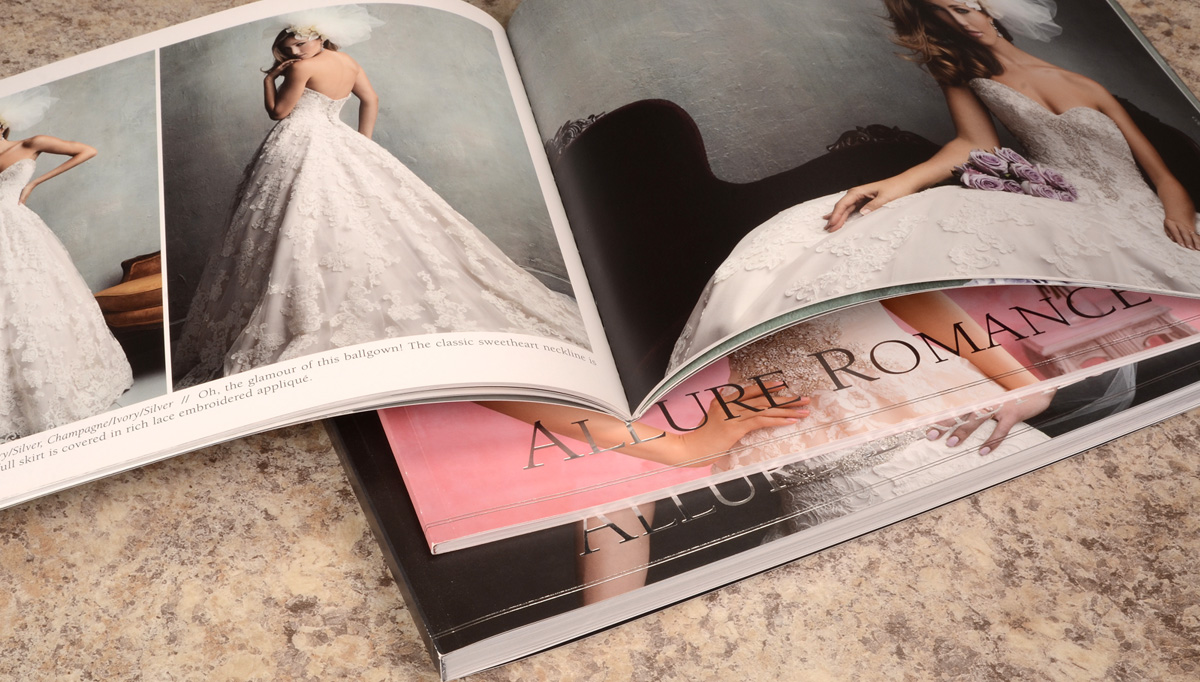Create A Bulking Dummy
Creating a mock up in the prepress stage of a job is very beneficial to your project. Utilizing the actual paper stock of choice is the best insurance. You will not only get a more accurate spine width, but you may discover unforeseen production problems as well.
Trap The Glue
Cover layouts must include a 1/8″ margin at the head and foot beyond the untrimmed folded signatures. Keep in mind this is in addition to your normal head and foot bleed trims. This additional margin of “cover stock” is what catches the glue-squeeze when the cover is applied to the spine of the book.
It helps keep the binder clean for the next book coming down the line.
Grain Direction
The grain direction of your cover stock material should be parallel with the spine whenever economically feasible. There are noticeable differences in a book’s appearance when binding “with” the grain vs. “against” the grain.
Cover stocks have a higher tendency to crack when folded “against” the grain. The same holds true when attempting to wrap a cover onto a book. The scores alone are not enough to keep the paper fibers from cracking.
The covers will also lie flatter against the text when they are run “with” the grain, sometimes referred to as Grain Correct. Covers bound against the grain tend to creep open as they sit on a table.
In today’s paper market, cover weight papers are using a higher concentration of fillers, and a smaller percentage of actual wood fibers. This adversely affects the paper’s characteristics, and will become more of an issue with time.
This blog is meant to provide tips to guide you. There may be exceptions to these guidelines. Your team at Wrap-Ups can help you find alternative layout options or even different binding methods!

